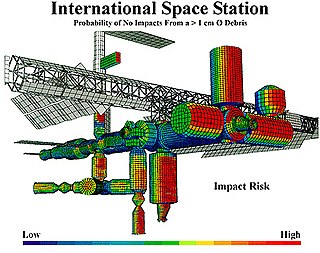
Risk management is the identification, evaluation, and prioritization of risks followed by coordinated and economical application of resources to minimize, monitor, and control the probability or impact of unfortunate events or to maximize the realization of opportunities.
The precautionary principle is a broad epistemological, philosophical and legal approach to innovations with potential for causing harm when extensive scientific knowledge on the matter is lacking. It emphasizes caution, pausing and review before leaping into new innovations that may prove disastrous. Critics argue that it is vague, self-cancelling, unscientific and an obstacle to progress.

Uncertainty refers to epistemic situations involving imperfect or unknown information. It applies to predictions of future events, to physical measurements that are already made, or to the unknown. Uncertainty arises in partially observable or stochastic environments, as well as due to ignorance, indolence, or both. It arises in any number of fields, including insurance, philosophy, physics, statistics, economics, finance, medicine, psychology, sociology, engineering, metrology, meteorology, ecology and information science.

Business continuity may be defined as "the capability of an organization to continue the delivery of products or services at pre-defined acceptable levels following a disruptive incident", and business continuity planning is the process of creating systems of prevention and recovery to deal with potential threats to a company. In addition to prevention, the goal is to enable ongoing operations before and during execution of disaster recovery. Business continuity is the intended outcome of proper execution of both business continuity planning and disaster recovery.
Broadly speaking, a risk assessment is the combined effort of:
- identifying and analyzing potential (future) events that may negatively impact individuals, assets, and/or the environment ; and
- making judgments "on the tolerability of the risk on the basis of a risk analysis" while considering influencing factors.
Scenario planning, scenario thinking, scenario analysis, scenario prediction and the scenario method all describe a strategic planning method that some organizations use to make flexible long-term plans. It is in large part an adaptation and generalization of classic methods used by military intelligence.
Convex optimization is a subfield of mathematical optimization that studies the problem of minimizing convex functions over convex sets. Many classes of convex optimization problems admit polynomial-time algorithms, whereas mathematical optimization is in general NP-hard.
Normalcy bias, or normality bias, is a cognitive bias which leads people to disbelieve or minimize threat warnings. Consequently, individuals underestimate the likelihood of a disaster, when it might affect them, and its potential adverse effects. The normalcy bias causes many people to not adequately prepare for natural disasters, market crashes, and calamities caused by human error. About 70% of people reportedly display normalcy bias during a disaster.
Info-gap decision theory seeks to optimize robustness to failure under severe uncertainty, in particular applying sensitivity analysis of the stability radius type to perturbations in the value of a given estimate of the parameter of interest. It has some connections with Wald's maximin model; some authors distinguish them, others consider them instances of the same principle.
A contingency plan is a plan devised for an outcome other than in the usual (expected) plan. It is often used for risk management for an exceptional risk that, though unlikely, would have catastrophic consequences.
Probabilistic design is a discipline within engineering design. It deals primarily with the consideration of the effects of random variability upon the performance of an engineering system during the design phase. Typically, these effects are related to quality and reliability. Thus, probabilistic design is a tool that is mostly used in areas that are concerned with quality and reliability. For example, product design, quality control, systems engineering, machine design, civil engineering and manufacturing. It differs from the classical approach to design by assuming a small probability of failure instead of using the safety factor.
A job safety analysis (JSA) is a procedure which helps integrate accepted safety and health principles and practices into a particular task or job operation. In a JSA, each basic step of the job is to identify potential hazards and to recommend the safest way to do the job. Other terms used to describe this procedure are job hazard analysis (JHA) and job hazard breakdown.
When estimating the cost for a project, product or other item or investment, there is always uncertainty as to the precise content of all items in the estimate, how work will be performed, what work conditions will be like when the project is executed and so on. These uncertainties are risks to the project. Some refer to these risks as "known-unknowns" because the estimator is aware of them, and based on past experience, can even estimate their probable costs. The estimated costs of the known-unknowns is referred to by cost estimators as cost contingency.

In numerical analysis, the interval finite element method is a finite element method that uses interval parameters. Interval FEM can be applied in situations where it is not possible to get reliable probabilistic characteristics of the structure. This is important in concrete structures, wood structures, geomechanics, composite structures, biomechanics and in many other areas. The goal of the Interval Finite Element is to find upper and lower bounds of different characteristics of the model and use these results in the design process. This is so called worst case design, which is closely related to the limit state design.

Jerusalem Institute for Policy Research (JIPR), formerly the Jerusalem Institute for Israel Studies, is an independent policy think tank located in Jerusalem, Israel. The institute conducts policy studies on Jerusalem, innovation policy (R&D), environmental policy and the management of the Israeli–Palestinian conflict. The institute's studies and recommendations serve as resources for governmental bodies, public institutions, civil organizations and the public.
In simple terms, risk is the possibility of something bad happening. Risk involves uncertainty about the effects/implications of an activity with respect to something that humans value, often focusing on negative, undesirable consequences. Many different definitions have been proposed. The international standard definition of risk for common understanding in different applications is “effect of uncertainty on objectives”.
The scenario approach or scenario optimization approach is a technique for obtaining solutions to robust optimization and chance-constrained optimization problems based on a sample of the constraints. It also relates to inductive reasoning in modeling and decision-making. The technique has existed for decades as a heuristic approach and has more recently been given a systematic theoretical foundation.

Isaac Elishakoff is a Distinguished Research Professor in the Ocean and Mechanical Engineering Department in the Florida Atlantic University, Boca Raton, Florida. He is an authoritative figure in the broad area of mechanics. He has made several contributions in the areas of random vibrations, solid mechanics of composite material, semi-inverse problems of vibrations and stability, functionally graded material structures, and nanotechnology.
Operation Yellowhammer was the codename used by the British HM Treasury for cross-government civil contingency planning for the possibility of Brexit without a withdrawal agreement – a no-deal Brexit. Had the UK and EU failed to conclude such an agreement, the UK's unilateral departure from the EU could have disrupted, for an unknown duration, many aspects of the relationship between the UK and European Union, including financial transfers, movement of people, trade, customs and other regulations. Operation Yellowhammer was intended to mitigate, within the UK, some of the effects of this disruption, and was expected to run for approximately three months. It was developed by the Civil Contingencies Secretariat (CCS), a department of the Cabinet Office responsible for emergency planning.
In regression analysis, an interval predictor model (IPM) is an approach to regression where bounds on the function to be approximated are obtained. This differs from other techniques in machine learning, where usually one wishes to estimate point values or an entire probability distribution. Interval Predictor Models are sometimes referred to as a nonparametric regression technique, because a potentially infinite set of functions are contained by the IPM, and no specific distribution is implied for the regressed variables.






